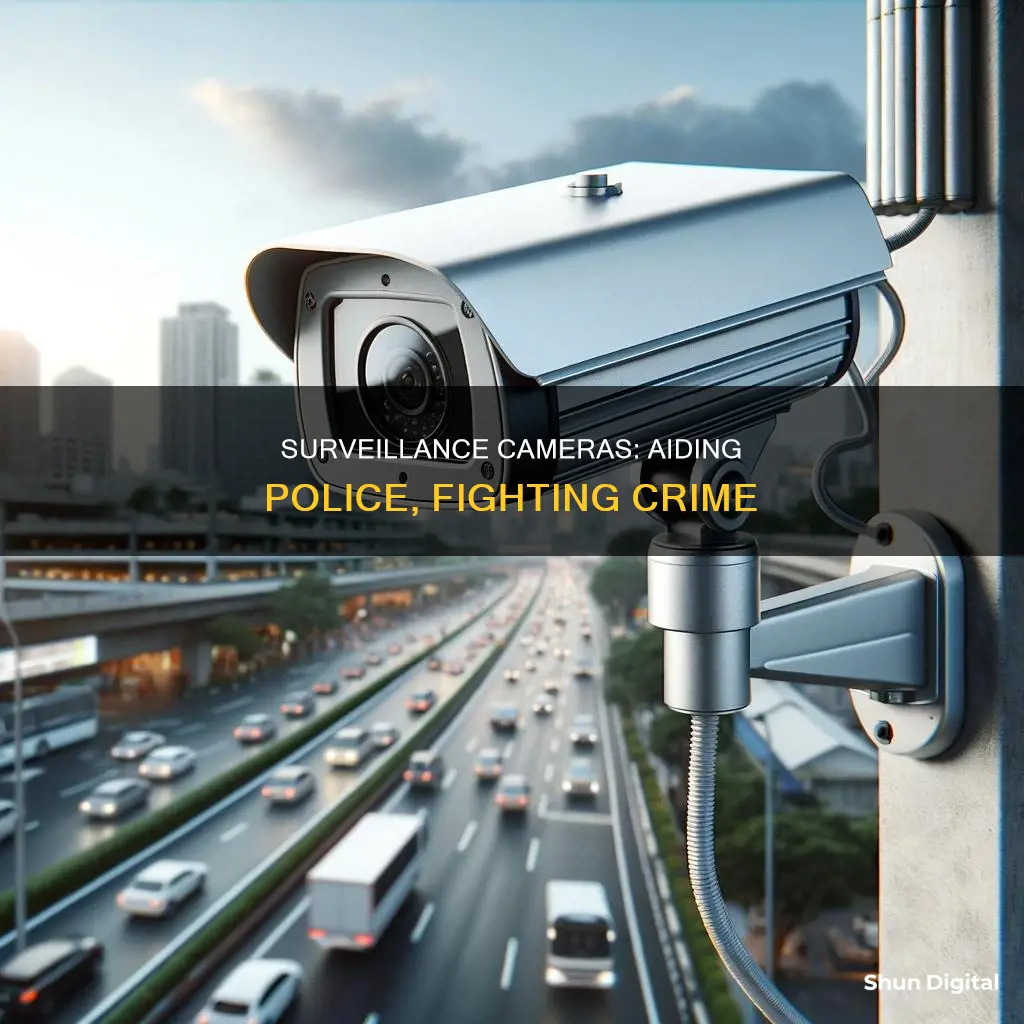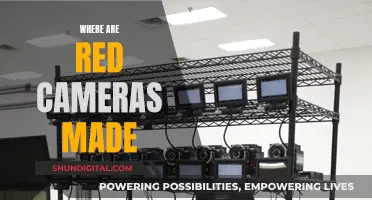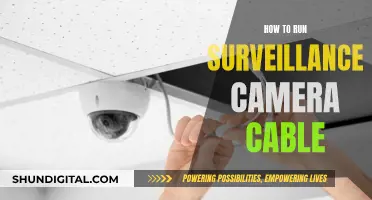
Surveillance cameras have become an integral part of modern policing, providing law enforcement with a powerful tool for crime prevention and investigation. By leveraging the capabilities of these cameras, police officers can effectively monitor public spaces and private properties, gather critical evidence, and track the movements of suspects. This technology acts as a deterrent to criminal activity, as potential criminals are less likely to engage in illegal behaviour when they know they are being watched.
The footage captured by surveillance cameras can be used as evidence in court, aiding in suspect identification, witness identification, and the reconstruction of the sequence of events leading up to a crime. Additionally, these cameras provide real-time monitoring capabilities, enabling law enforcement to respond swiftly to incidents and potentially prevent crimes from occurring or catch suspects in the act.
While surveillance cameras offer significant advantages in crime-fighting, their use also raises important questions about privacy and civil liberties. It is crucial for law enforcement agencies and property owners to utilise these technologies responsibly and in compliance with legal regulations.
| Characteristics | Values |
|---|---|
| Crime Prevention | Surveillance cameras deter criminal activity and help prevent crimes from occurring. |
| Crime Solving | Cameras provide valuable evidence and aid in investigations, helping to identify and track suspects, and providing a timeline of events. |
| Cost-Effectiveness | Security cameras are a cost-effective way to improve public safety, with relatively low installation and maintenance costs. |
| Real-Time Monitoring | Surveillance cameras allow for real-time monitoring of public spaces and private properties, enabling quick response to incidents. |
| Community Safety | Cameras provide a sense of safety to the community and help improve relationships between law enforcement and the public. |
| Evidence Collection | Cameras capture images and footage that can be used to build a strong case against suspects and increase the chances of a successful conviction. |
| Crime Scene Analysis | Surveillance footage helps investigators piece together the sequence of events and reconstruct the crime scene. |
| Witness Identification | Cameras can help identify witnesses and corroborate or disprove eyewitness testimony. |
| Crime Hotspot Monitoring | Surveillance cameras can be used to monitor high-risk areas such as banks, convenience stores, and public transportation hubs. |
What You'll Learn
- Surveillance cameras can help police identify suspects, track their movements, and gather evidence
- They can aid in investigations by providing multiple perspectives and reducing reliance on eyewitness testimony
- Cameras can be used to monitor high-risk areas, such as banks and public transportation hubs, acting as a visual deterrent to potential criminals
- They can also be used to monitor and protect private properties, giving homeowners peace of mind
- Surveillance cameras can be integrated with other technologies, such as gunshot detection systems and license plate readers, to enhance their effectiveness

Surveillance cameras can help police identify suspects, track their movements, and gather evidence
Surveillance cameras are an essential tool for law enforcement, aiding in the identification of suspects, tracking their movements, and gathering evidence. They provide a powerful means of deterring, investigating, and solving crimes, while also raising concerns about privacy and civil liberties.
Identifying Suspects and Gathering Evidence
Surveillance cameras capture images and footage that help law enforcement identify suspects and gather critical evidence at crime scenes. This evidence can be used to build a strong case against suspects, increasing the likelihood of conviction. Cameras can be placed in multiple locations, providing different perspectives and aiding in reconstructing the sequence of events.
Tracking Movements and Real-Time Monitoring
Surveillance cameras enable real-time monitoring of public spaces and private properties, allowing police to respond swiftly to incidents. This capability is especially valuable in time-sensitive situations, such as violent crimes or terrorism. By tracking suspects' movements, police can make timely arrests and prevent crimes from escalating.
Community Collaboration and Crime Prevention
Law enforcement agencies often collaborate with small businesses and citizens through camera registry programs to gather evidence related to local crimes. This approach leverages the resources of the community without incurring the costs of purchasing and maintaining additional devices. Additionally, the presence of surveillance cameras acts as a deterrent to criminal activity, as potential criminals are less likely to engage in illegal behaviour when they know they are being monitored.
While surveillance cameras offer significant advantages to police investigations, it is crucial to address privacy concerns and ensure responsible use in compliance with legal regulations. Striking a balance between public safety and individual privacy rights is essential in the deployment of surveillance technology.
Charging Your Nikon: A Quick Guide to Powering Up Your Camera 3700
You may want to see also

They can aid in investigations by providing multiple perspectives and reducing reliance on eyewitness testimony
Surveillance cameras are an invaluable asset for police investigations, offering multiple perspectives and reducing the need for eyewitness testimony. By capturing incidents as they occur, these cameras provide an objective, unfiltered view of events, which is far more reliable than human memory and interpretation. This is especially important when eyewitnesses are hesitant to come forward or when their testimonies are contradictory.
The ability to place cameras in multiple locations gives investigators a more complete picture of a crime scene and aids in reconstructing the sequence of events. This was evident in the Boston Marathon Bombing, where security cameras captured footage of the suspects, aiding in their identification and eventual capture. Similarly, in a murder investigation in Chicago, security cameras captured the suspect's image, which helped law enforcement track their movements and make an arrest.
Surveillance cameras also play a crucial role in corroborating or disproving witness statements. For example, if a witness claims to have seen a dark blue minivan at the scene of a crime, camera footage can validate this claim or provide a more accurate colour, model, or even a license plate. This was demonstrated in Newark, New Jersey, where a network of publicly accessible cameras allowed for the monitoring of an entire city, providing valuable evidence to support investigations.
The use of surveillance cameras has resulted in quicker case resolutions, more efficient resource utilisation, and higher conviction rates. They have become indispensable tools for law enforcement, revolutionising the way police operate and contributing to a significant drop in crime rates, as seen in East Orange, New Jersey.
Focusing LG V10 Camera: Tips and Tricks
You may want to see also

Cameras can be used to monitor high-risk areas, such as banks and public transportation hubs, acting as a visual deterrent to potential criminals
Surveillance cameras are an effective tool for monitoring high-risk areas such as banks and public transportation hubs, acting as a visual deterrent to potential criminals. By installing cameras in these locations, police can help prevent crimes before they occur and improve the overall safety of the community.
In recent years, the use of surveillance cameras in high-risk areas has become increasingly common. Banks, for example, are prime targets for robberies and theft. By placing cameras in and around the bank premises, police can monitor the area and deter potential criminals from attempting any illegal activities. The presence of cameras can make it more difficult for criminals to escape detection, as their actions are likely to be recorded and used as evidence in any subsequent investigations.
Public transportation hubs, such as train stations, bus terminals, and airports, are also considered high-risk areas due to the large number of people passing through and the potential for criminal activities. Surveillance cameras in these locations can help police identify suspicious activities, track the movement of individuals, and respond quickly to any incidents that may occur.
The effectiveness of surveillance cameras as a visual deterrent has been supported by various studies. For example, a study by the Municipal Technical Advisory Service found that CCTV cameras were effective in deterring crime, especially when paired with other elements like lighting. Additionally, a survey of 422 burglars by the UNC Department of Criminal Justice & Criminology found that half of them considered outdoor security cameras as effective deterrents.
It's important to note that while surveillance cameras can be a powerful tool for crime prevention, they should be used with caution to respect the privacy of individuals. Proper regulations and oversight are necessary to ensure that the benefits of surveillance are not outweighed by potential privacy concerns.
Overall, the use of surveillance cameras to monitor high-risk areas can be a valuable asset for police in their efforts to prevent crimes and protect the public. By installing cameras in banks and public transportation hubs, police can deter potential criminals and improve the overall safety of these locations.
Focusing on Dual Subjects with Your Camera
You may want to see also

They can also be used to monitor and protect private properties, giving homeowners peace of mind
Surveillance cameras are a great way to monitor and protect private properties, giving homeowners peace of mind. They can be used to keep an eye on your home and ensure that if something does happen, you have useful evidence and footage. This can be especially convenient when integrated with other smart home devices.
However, it is important to be aware of the privacy concerns surrounding surveillance cameras. While it is generally legal to install security cameras on your property, there are laws surrounding the expectation of privacy. This means that you should avoid placing cameras in areas where people have a reasonable expectation of privacy, such as bathrooms, bedrooms, and changing rooms. It is also important to consider the audio recording capabilities of your cameras, as some states have all-party consent laws, which require the consent of all parties for audio recording.
In addition, the companies that make the cameras often have access to the recorded footage, and in some cases, this means that police can also access it. While police don't have direct access to your data, they can request it from you or the camera company. To maintain control over your footage, you can choose cameras that store footage locally instead of in the cloud, or use cloud storage with end-to-end encryption.
By following privacy laws and being mindful of who has access to your footage, you can use surveillance cameras to effectively monitor and protect your private property.
Fine-Tuning Your Axus M3037 Camera for Optimal Focus
You may want to see also

Surveillance cameras can be integrated with other technologies, such as gunshot detection systems and license plate readers, to enhance their effectiveness
Surveillance cameras are powerful tools that can aid law enforcement in a variety of ways. One significant advantage is their ability to integrate with other technologies, creating a more comprehensive and effective surveillance system. Two examples of such technologies are gunshot detection systems and license plate readers, which, when combined with surveillance cameras, offer enhanced capabilities to the police.
Gunshot detection systems, such as the Omnilert Gun Detect, utilise AI technology to identify gun threats. This system works alongside existing security cameras, providing early detection of gun threats and sending alerts for human verification. By integrating with surveillance cameras, this technology can offer detailed situational intelligence to police and onsite security teams, enabling a faster and more efficient response to active shooter incidents. The combination of audio detection and visual surveillance ensures a more accurate and timely response, potentially saving lives.
License plate readers, also known as automatic license plate readers (ALPRs), are high-speed, computer-controlled camera systems. These readers can be stationary, fixed to objects such as streetlights or police squad cars, or mobile, allowing for the capture of data from multiple locations. ALPRs automatically record license plate numbers, along with location, date, and time, providing valuable information for police investigations. This technology assists in locating vehicles related to crimes, identifying travel patterns, and associating vehicles with each other.
The integration of license plate readers with surveillance cameras offers a more comprehensive view of a vehicle's movements and activities. By combining the visual data from surveillance cameras with the specific information captured by ALPRs, police can effectively track vehicles, identify suspects, and gather evidence. This integration enhances the efficiency of investigations, making it a valuable tool for law enforcement.
The effectiveness of surveillance cameras is further enhanced by their ability to integrate with other smart home devices and technologies. This integration allows for a more connected and comprehensive security system, providing valuable support to police investigations and contributing to a safer and more secure environment for communities.
Attaching a Mod Camera Strap: A Quick Guide
You may want to see also
Frequently asked questions
Surveillance cameras act as a visual deterrent to potential criminals. When people are aware that they are being monitored, they are less likely to engage in illegal activities. This can lead to a decrease in crime rates and create a safer community for everyone.
Surveillance cameras provide valuable evidence for police investigations. They capture images and footage of suspects, their actions, and other important details that help identify and catch criminals. This evidence is crucial in building a strong case against suspects and securing convictions.
Surveillance cameras enable real-time monitoring of public areas, allowing law enforcement to respond swiftly to incidents. This timely response can prevent crimes from escalating and aid in catching suspects in the act.
While surveillance cameras raise valid privacy concerns, these can be mitigated by responsible use and adherence to legal regulations. Property owners can choose cameras that store footage locally, use cloud storage with end-to-end encryption, or opt for systems like Apple's HomeKit Secure Video, ensuring that only authorised users can access the data.
Surveillance cameras provide visual evidence that corroborates witness testimony, creating a stronger case against suspects. This footage helps establish the credibility of witnesses and ensures the accuracy of their statements. It also provides a clear and objective record of events, increasing the likelihood of a successful prosecution.







